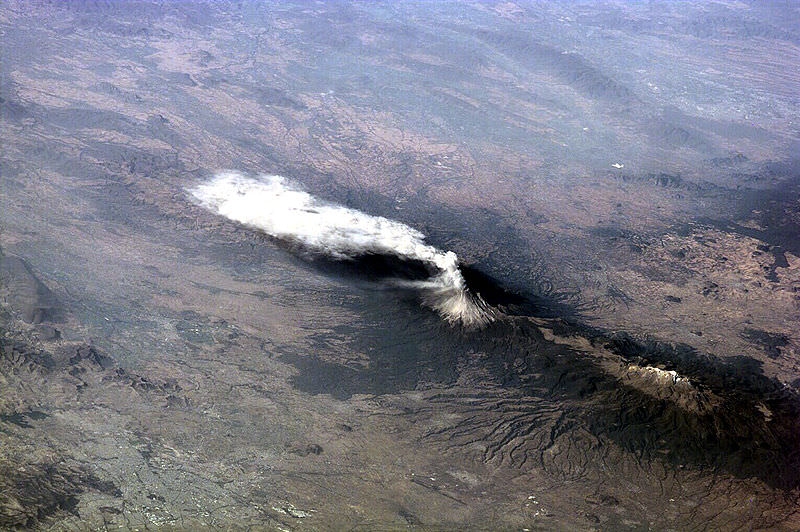[/caption]
Popocatepetl is a famous volcano. It is one of the most active volcanoes in Mexico, and the second tallest mountain in the country with an elevation of 5,426 meters (it’s the third tallest active volcano in the Northern Hemisphere). It’s located about 70 km southeast from Mexico City, so it can be seen on clear days from the city – especially when it’s erupting clouds of ash many km into the air. It has had more than 20 major eruptions since the arrival of the Spanish in 1519.
The name Popocatepetl comes from the Aztec word for smoking mountain. More than 30 million people live within view of the mountain, including Mexico City and the Pueblo, and hundreds of thousands would be at risk during a major eruption. Pyroclastic flows could endanger villages and towns built up on the volcano’s flanks, and although it has been relatively safe in the last century, it has had several plinian eruptions over the last 10,000 years.
The peak of Popocatepetl is clad is glaciers, and has a steep-walled 450-meter-deep crater at the top. From most vantages, the peak of the mountain looks very symmetrical; although, it does have a side peak called Ventorillo to the northwest. Geologists have determined that three previous major cones were destroyed during the Pleistocene era (between 11,000 and 1.8 million years ago).
Most of the eruptions on Popocatepetl have been mild-to-moderate Vulcanian steam and ash emissions, with some larger explosive eruptions in 1519 and 1663. In 1920, there were some explosive eruptions and a small lava plug at the crater at the top of the volcano. There have been some additional ash cloud events in the 1920s through the 1940s, but the volcano has been largely quiet since then.
We have written many articles about volcanoes for Universe Today. Here’s an article about Paricutin, a famous volcano in Mexico that appeared in a farmer’s cornfield. And here’s a list of famous volcanoes around the world.
Want more resources on the Earth? Here’s a link to NASA’s Human Spaceflight page, and here’s NASA’s Visible Earth.
We have also recorded an episode of Astronomy Cast about Earth, as part of our tour through the Solar System – Episode 51: Earth.

